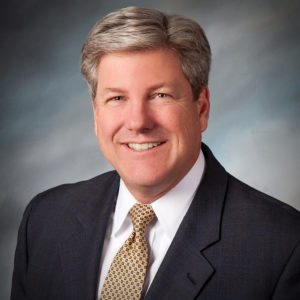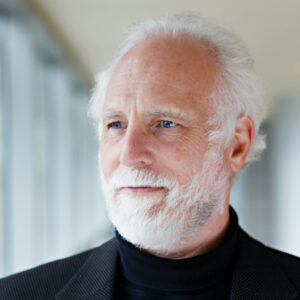Article Originally Published: RIABiz
Sheryl Garrett has just sold the Garrett Planning Network (GPN) while saving her soul, which has been severely tested by tragedy for the past eight years.
The 61-year-old financial planning pioneer is now taking a series of steps that humbly reflect the reality of her Eureka Springs, Ark., planning company — a financial plan, business plan and life plan can only take you so far.
“I think we’re on Plan D, and you have to have that flexibility,” Garrett says.
When love, sickness, and a shortened life are figured in, Plans A, B, and C are scrapped.
“My spouse was diagnosed with stage four colon cancer in August 2016,” she says, explaining why the Network lost members and will now be sold to the remaining members.
“The whole concept of financial planning is about designing the life you want and balancing what you have today and the life you’ll have in the future. I recognized very powerfully that the only place I wanted to be was caring for my spouse and younger daughter.”
“I wanted to focus on these two people who were dependent on me and, most important, to me.”
Transitions
Garrett’s spouse passed away in September 2021, and then in 2022, her dad moved in. She cared for him until he also died.
“When my spouse went to hospice, it was handy to have conversations with people while they were still alive. We really packed in three times as much quality time into those five years. It felt more like 15 than five.”
“This was a long-term project. I had hoped a group of members would come together and take over, and that’s exactly what happened,” Garrett says. “They want to carry on what we already created with more enthusiasm and vigor and the next generation as well – all of the generations,”
Garrett was such a recognized name in planning, that she says it is bittersweet to leave.
“I had zero plans to retire this young,” she says. Garrett turns 62 this summer. “Financially, it wasn’t my plan to be a caregiver for so long.
“You’ve got to do what your heart tells you is the most important thing. I had flexibility with my role with the network,” Garrett adds.
“I feel like I’ve been swimming around a lake carrying a baby, and I’m doing OK, but I’m just treading water, and the Alliance board members are in a lifeboat, and I want to hand the baby to the lifeboat. The baby needs saved.”
Refining the Mission
Under new management, the Network will have a new business model, in part by crossing a Rubicon it previously treated as a third rail.
It will allow planners who manage assets to become members, but members still must offer hourly and project planning at their core. The organization used only to allow its advisors to provide hourly planning. The Alliance members said they are still shaping the organization’s guidelines and structure.
“We’re looking at this as Garrett Planning Network 2.0,” Garrett says. “Now, we’re bringing in new thoughts and energy – people who can shepherd us into the future. It’ll be less about Sheryl and more about the mission.”
When she started the network, Garrett says she was slammed for her hourly planning projects.
“I got called an idiot, and I’m sure people are still getting called an idiot for wanting to charge an accessible rate.
“Sometimes, it’s better to quote a project fee; if I tell them the total project cost is $2,200, that can be better than me quoting $360 an hour. The hourly rate seems hard for people to stomach,” Garrett says.
New Voices
Eileen Freiburger, a former long-time GPN member who has stepped into the role of GPN’s managing director, says the change is welcome.
“We hurt ourselves by saying every member is hourly,” he says. “At some point in the network, if you were managing assets, you no longer met the criteria, and we dropped them as members.
“We lost a fair number of members who had the right mindset and were good quality people but didn’t have the right formula.”
While advisors can manage assets, they must at their core offer hourly and project planning as well, Freiburger says.
Garrett wants the new voice of the network to be its advisor members, not just her.
“It’s not the Sheryl story. You can be accessible and provide high-quality fiduciary advice to middle America, and we also work with wealthy people.
“We work with people on a one-time basis – if that’s all they think they need. We are also available if they think they need to come back.
Preserving Community
While other firms were interested in buying the network over the years, Garrett was convinced that having its members buy the network was the best solution.
This decision highlights the network members’ desire to preserve the integrity of what Garrett built and foster a sense of community and shared responsibility, says Jean Keener, principal of Keener Financial Planning, whose firm advises on $1 billion.
“Sheryl wanted to retire from the network. She wanted to preserve the character of the network. If she had sold to private equity, I can guarantee it wouldn’t be the same organization we know and love,” Keener says.
Rising Challenges
But the Network also needs to deal with the fact that other RIA networks are rising – not least the ambitious and fast-growing XY Planning Network, founded in 2014 by Michael Kitces and Alan Moore. See: As many of his RIAs hit critical third year, Michael Kitces uses XYPN Live event to signal his startup’s market power is catching up to his mind share
Garrett sees them as “coop-petition” more than competition. Moore himself was initially a member of the Garrett Planning Network.
Kitces credits Garrett for getting the word out about the hourly planning model. “She put the hourly financial planning model on the map and make it known to consumers,” Kitces says. “And because charging hourly fees requires an RIA registration, Sheryl also effectively stoked the growth of independent RIAs, going all the way back to the late 1990s…”
Garrett says several members participate in both groups, and she feels they are complementary organizations.
“I think we and XYPN have benefited from each other. We find a number of people who have checked us out or who are considering XYPN also check us out and vice versa. We have several who chose us who used to be XYPN and the other way around too,” Garrett says.
She acknowledges that XYPN does offer more perks and is more of a package with a tech stack. “We don’t do that. Ours is more about humans and a community and those who do a lot of hourly work,” Garrett says.
Seeking a Balance
Business is brisk, even if some RIAs are convinced that hourly and project planners aren’t lucrative positions, says Lisa Weil, principal of Clarity Northwest Wealth Management LLC in Seattle.
“I’ve had more inquiries than I can take on. There’s a huge demand for this model, but, it’s not potentially as lucrative starting out. I think you can build a business that is profitable and viable. Sometimes getting started can be harder,” she says.
Freiburger says the Network is seeking a balance of what the consumer and planners want and need.
“Life has changed, and we want the advisor who realizes that, as a fiduciary, there isn’t one box that fits a client.
“We want to make sure you’re available for project work for a do-it-yourself-client, but you have to be flexible so the consumer can decide what is right for them,” Freiburger says.
Garrett Planning Network also provides coaching and insight for new advisors, and Kitces says her organization was one of the first to launch this type of program.
“The way Sheryl built her network – focusing on how to teach a particular business model to serve a particular type of clientele – was also, I believe, the launch of a new type of support platform for financial advisors, which I originally called TFPPs (Turnkey Financial Planning Platforms.”
Ron Rhoades, an assistant professor of finance at Western Kentucky University, says Garrett and her Network can still make the claim of being purest in putting client interests first.
“Her fee-only network provided a home and community for those investment fiduciaries practicing in what is perhaps the ‘most pure’ form of fiduciary advice – i.e., those charging on an hourly basis.
I was fortunate enough to attend a few meetings of The Garrett Planning Network, and it was truly a community of talented advisors who were all willing to share and to support each other,” he says.
Planning Pioneer
When Garrett founded the Garrett Planning Network, it was the first of its kind, and she quickly became one of the nation’s prominent voices for the fiduciary network.
In 2015, she received a shout-out from President Obama for her work in the fiduciary movement. See: How Sheryl Garrett got a hush-hush invitation from President Obama and how she pierced the fog about putting clients first
“Her prominent voice was welcomed by policymakers and likely significantly impacted the development of the Dodd-Frank Act, as well as SEC and DOL rules, regarding fiduciary duties,” Rhoades says.
“Sheryl’s the first to create a national business based on hourly and project planning and raise the media and consumer’s awareness,” says Knut A. Rostad, president of the nonprofit Institute for the Fiduciary Standard.
“She’s an entrepreneur extraordinaire. She showed how to make planning accessible by taking great risks. She challenged the status quo. Young planners need to follow her lead. The future of fiduciary advice depends on it.”
Garrett was a founding member of The Committee for Fiduciary Standard, a group of leaders who contributed to pushing the fiduciary standard on Capitol Hill, says Rhoades.
The Next Stage
Garrett will focus her attention on a large Arkansas farm, where she has an orchard and a Chinese Greenhouse.
She grows apples, American pears, Asian pears, avocados, bananas, asparagus, raspberries, blackberries, squash, bok choy, green beans, and other fruits and vegetables.
Growing plants helped her heal from her grief over her spouse’s death. She is enthusiastic about going to farmers’ markets and selling local fruit, because there aren’t many local fruit producers in her area.
“It’s very healing and therapeutic,” she says. “A lot of the things – elderberry syrup and wine. I’ve got gobs of stuff for jam. It’s a little bit toward the exotic.
“My bananas are doing well. It’s pretty fun.”
Article Originally Published: RIABiz

